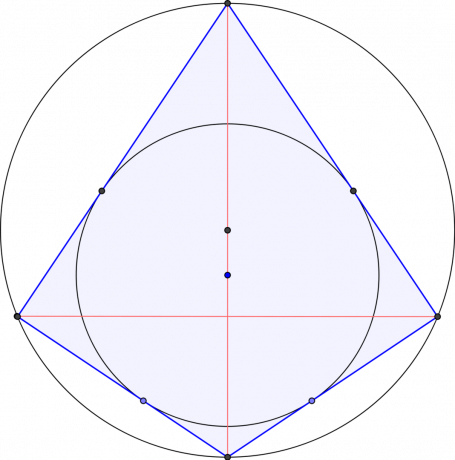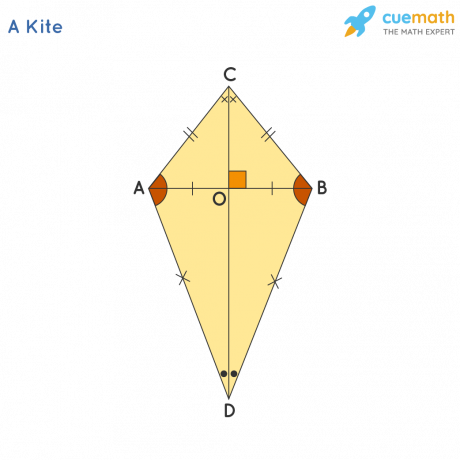Circumference & Area Formulas of Kites (Example Problems)
Loading...
The formula for the circumference of a kite may be one of the formulas we often hear. In the evening, we may often see kites. But it turns out that the kite is a flat shape.
In addition to kites that are often played with, there are various kinds of objects in the shape of a kite.
List of contents
Definition of Kite

A kite itself is a flat shape with a two-dimensional shape and has two pairs of sides that are the same length but not parallel and form different angles.
Read: Cut the rice cake
Nature of the Kite Build

Kites have a number of properties that distinguish them from other flat shapes. The following are the characteristics of a flat kite, including:
- Has two pairs of sides that are the same length but not parallel
- It has two equal angles, namely angle ABC = angle ADC
- It has two perpendicular diagonals, i.e. AC is perpendicular to BD
- Has one symmetrical axis that coincides
The formula for the area of a kite

Before discussing the formula for the circumference of a kite, we will discuss the formula for the area of a kite first. Here's the formula:
L: X first diagonal X second diagonal
L: X d1 X d2
Read: Geometry
Kite Circumference Formula

After discussing the area formula, the next is the perimeter formula. The following formula for the circumference of a kite is:
K= (a+a) + (b+b)
K= 2a + 2b
K= 2(a+b)
Example of a flat kite

Basically, examples of the shape of a kite are not easy to find in everyday life. Here are some examples:
- fence motif
- Batik motif
- bag model
- Borobudur temple reliefs
- Pineapple eye seeds
- Two angled rulers brought together
- Variation of window shape
- home ventilation
Read: Build Curved Side Room
Examples of Kite Problems and Discussion

To make the explanation of kites clearer, here are examples of the circumference of the kite, the area of the kite and the discussion:
1. A flat shape kite has a diagonal of 10 cm and 20 cm, the area of this kite is:
Answer:
Area= X 10 X 20
L= 100 cm²
2. One of the short sides of the kite is 5 cm, while the long side is 8 cm, the circumference of the kite is:
Advertisement
Answer:
Perimeter = 2 X (8+5)
K= 2 X 13
K= 26 cm
3. The area of one of the plane figures of a kite is 100 cm², if one of its diagonal lengths is 10 cm, the length of the other diagonal is:
Answer:
D 2 = (2 × Area): D 1
D 2 = (2 × 100): 10
D2 = 200:10
D2 = 20 cm
4. It is known that the circumference of a kite is 100 cm, if the length of the side is 30 cm, the length of the short side is:
Answer:
Short S = (½ × Perimeter) – Long S
Short S = (½ × 100) – 30
S short = 50 – 30
S short = 20 cm
5. Deni ran around the field in the shape of a kite. The length of the side is 20 meters while the short side is 15 meters. if Deni circled the field up to 5 times, the distance traveled is:
Answer:
Perimeter of the field = 2 × (long side + short side)
K = 2 × (20 + 15)
K = 2 × 35
K = 70 m
Distance of the track = circumference × revolution
Track distance = 70 × 5
Track distance = 350 m
6. A field in the shape of a kite has a length of 10 meters and a short side of 5 meters. If lights are to be installed around the field with a distance of 2 meters, the required number of lights is:
Answer:
Perimeter of the field = 2 × 2 × (long side + short side)
K = 2 × (10 + 5)
K = 2 × 15
K = 30 m
Number of lights = circumference of the field: distance
Number of lamps = 30: 2 m
Number of lamps = 15 lamps
With various discussions and even examples of the circumference of a kite above, we will definitely understand the formula and how to work on a flat kite.
X CLOSE
Advertisements
ADVERTISEMENT
X CLOSE
